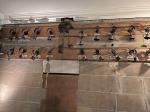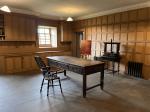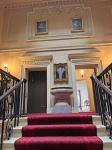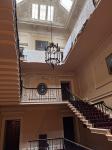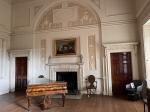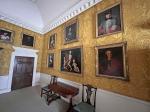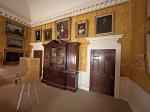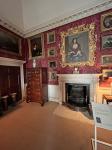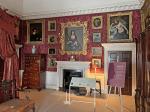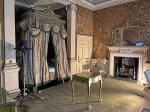Tuesday 16th April 2024
I have to say I am quite ashamed that today was our first visit to look around Nostell Priory, a lovely stately home on the outskirts of Wakefield in West Yorkshire.
It is only a thirty-five-minute drive from home, and having booked our tickets online, entry to the site was quite straight forward. It was a cold, dry, bright, and sunny morning, which was just as well as it is a good eight hundred metre walk from the car park to the main house.
The house sits in 300 acres of parkland. The front of the house faces east with open parkland as far as the eye can see. Leading to the lake on the west side of the house is the west lawn. The parkland has lakeside and woodland walks, views of the druid's bridge and walks to the restored Obelisk Lodge, a parkland gatehouse, through wildflower meadows and lots of dog walking routes.
After a steady walk from the car, we arrived at the impressive courtyard dominated by the beautiful and ornate bell tower and ticket office. Within the courtyard is a National trust shop, café and toilets, as well as access to the gardens. Entry to the house and grounds was free for National Trust members, it is just a two-minute walk from the ticket office to the front of the house. The house does look impressive as it comes in to view from the car park. Not knowing what to expect when we entered the house, I was pleasantly surprised. Many of the downstairs rooms were sparsely furnished and dark, but story boards gave an excellent description of what life was like in the early 1800’s. After touring several of the downstairs rooms the route took us up a grand carpeted staircase to the first floor. Here the rooms were lavishly furnished with heavy patterned wallpapers and Rococo decorated ceilings. The house contains some of the best surviving collections of Thomas Chippendale's furniture, including marquetry and japanned furniture as well as picture and pier glass frames.
On the walls where a diverse collection of approximately 200 oil paintings includes important works by Brueghel, Hogarth, and Kauffmann. Other collection highlights include the John Harrison longcase clock and an outstanding example of a ‘hong’ bowl, a porcelain punch bowl made in China for export trade.
One of the many highlights for me was the huge 18th century Georgian dolls house, with its fine wall decorations and elaborate upholstery and tiny silverware. I could have spent a good hour looking into all the rooms.
Another room that caught my eye was the lavishly furnished tapestry room. The room was originally designed by Robert Adam during the 1760s. It was intended to be used as the drawing room. It wasn’t until 1774 that the ceiling plaster work and wall decorations were completed. The room remained unfurnished till 1817 until Charles Winn inherited the house, he furnished the room with huge Dutch tapestries. Of the four largest tapestries, three date from 1750.
The pierce du resistance for me though was the library room. Centre stage in the room was the Thomas Chippendale’s library desk a beautiful example of the fine 18th century craftsmanship. The library contains over 4,000 books, made up of four smaller collections brought together by Charles Winn (1795–1874) during the 19th century.
After leaving the library we headed back down the stairs and made our way over to the courtyard café for some brunch before the journey home. Now planning my next visit.
|

